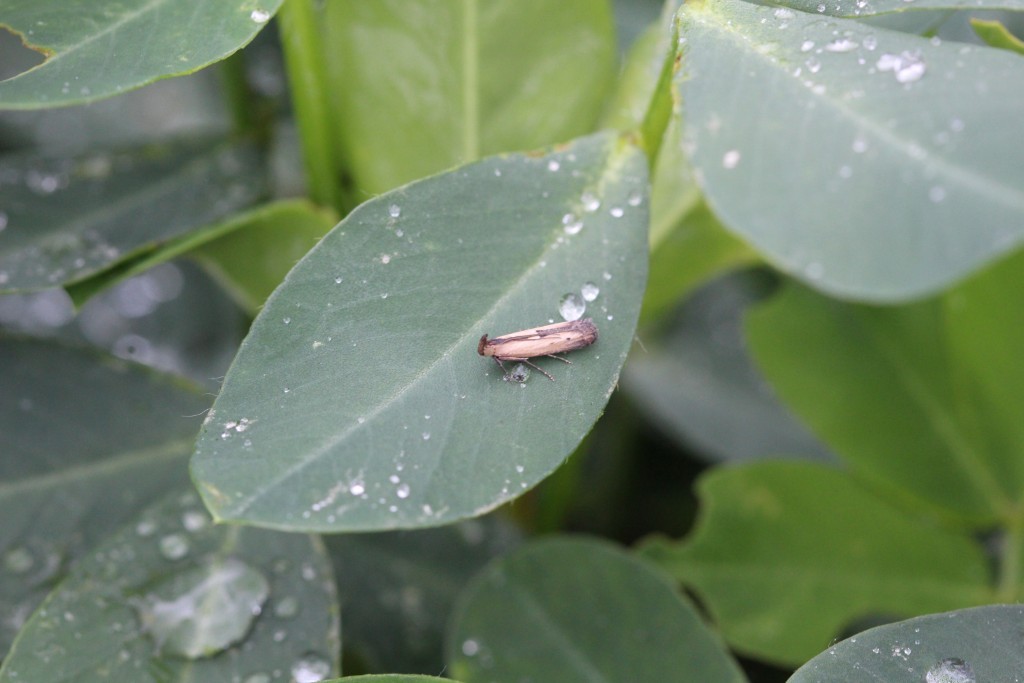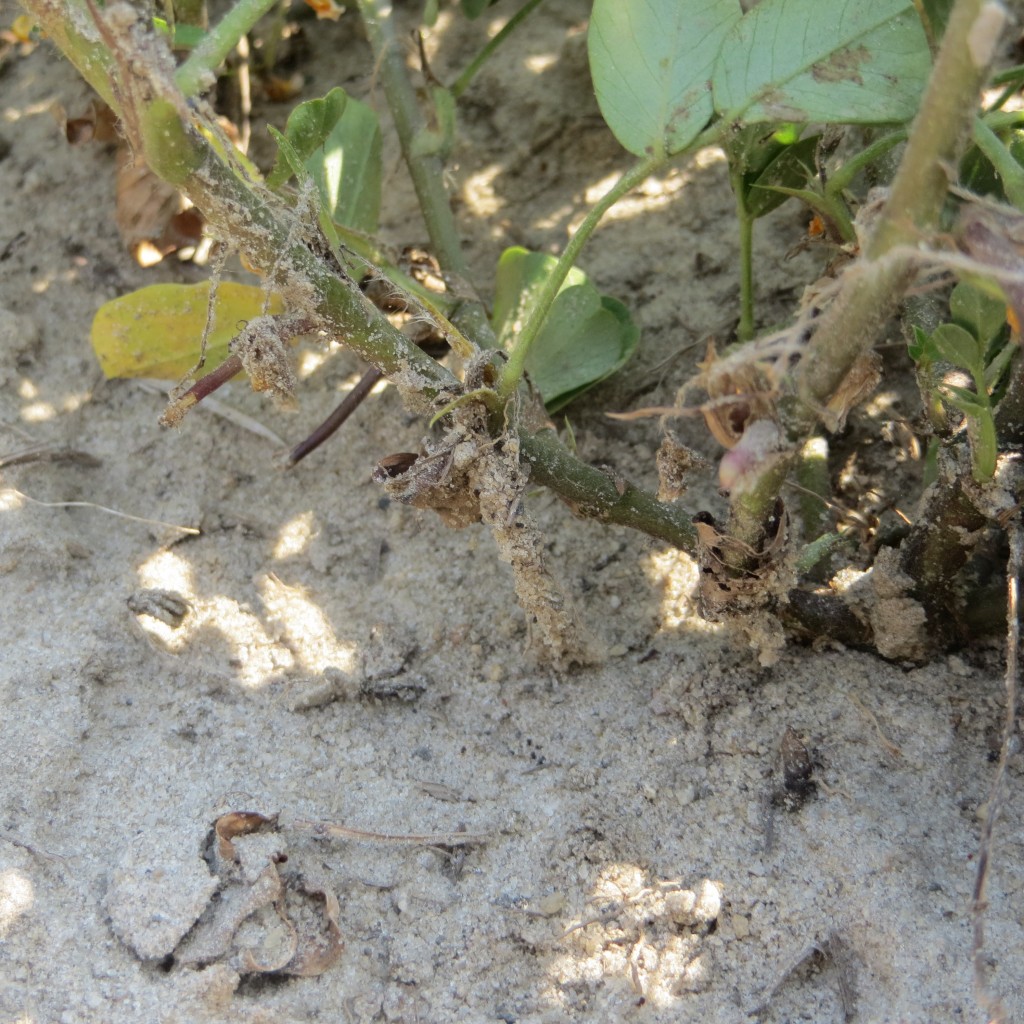The last two days have brought calls and texts from consultants and county agents finding lesser cornstalk borer (LCB) in Georgia peanut fields. The infestations are not limited to one area of the state, and populations have reached treatable levels in many locations.
Scouts should be looking closely for moths, silk tubes, and caterpillars as they check fields this week. Growers who do not have a scout are advised to walk fields to determine if LCB is present. When infestations are widespread, it can be tempting for growers without a scout to apply an insecticide for LCB because the neighbor is spraying, but not all fields will require treatment.



We recently posted a video about scouting for LCB in peanut (it is re-posted below). The video highlights the importance of random sampling to achieve an accurate assessment of infestations. LCB moths prefer to lay eggs on or near plants in a skip. This is useful to know because it can help you quickly determine if the pest is present in a field, but it is important that you do not check only plants in skips. This will result in a biased count that overestimates population size.
Lesser cornstalk borer is a dry weather pest, but it can and does infest irrigated fields especially prior to canopy closure. We cannot keep bare soil wet enough to eliminate the pest with irrigation. Once the row middles are covered, we generally see LCB problems dissipate if rainfall and/or irrigation are adequate. While they do not survive well in moist conditions, one or two rainfall events will not eliminate infestations.
Treatment options for lesser cornstalk borer in peanut include chlorantraniliprole (Vantacor previously Prevathon) or novaluron (Diamond) applied as broadcast foliar sprays.
There are a number of posts on this blog that cover topics related to lesser cornstalk borer. You can review these by selecting “LCB” in the drop down menu under “Categories” on the right hand side of this page.